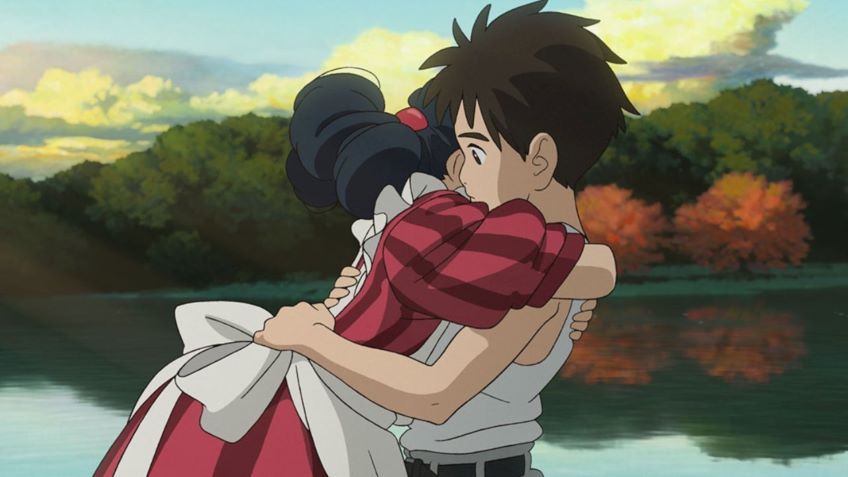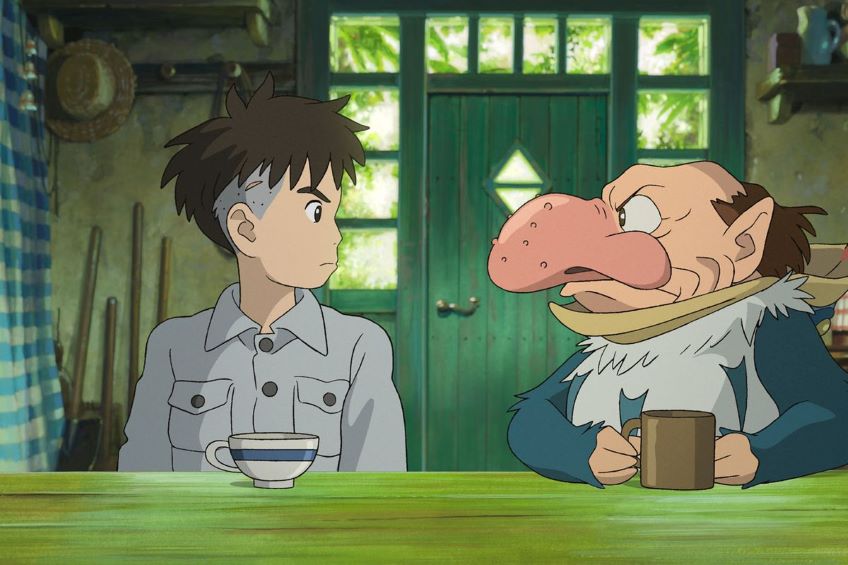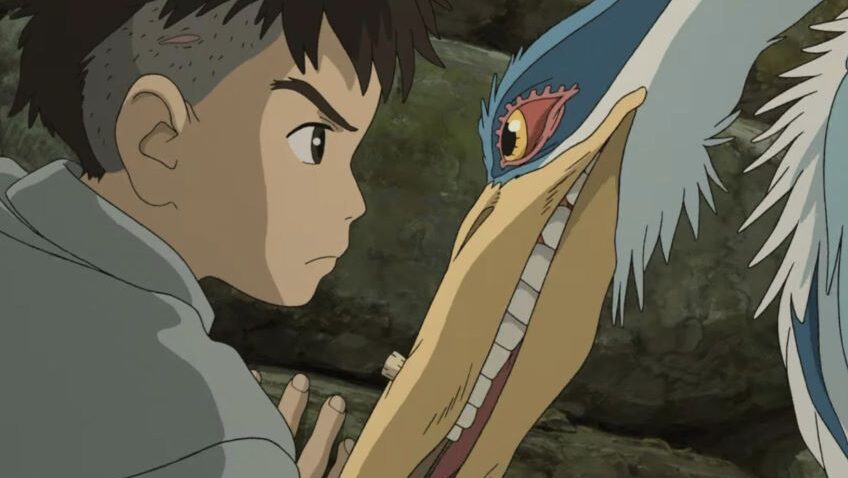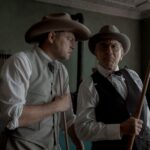Joyce Glasser reviews The Boy and the Heron (December 26, 2023) Cert 12A, 123 Mins.
Michael Man, 80, Martin Scorsese, 81 and Ridley Scott, 86 are still churning out big movies, so it is not all that surprising, in a country known for its population’s longevity, that Studio Ghibli co-founder Hayao Miyazaki is, too. What is more unusual is that Miyazaki emerged from the retirement he announced in 2013, to write and direct an ambitious, two-hour animated fantasy, The Boy and the Heron. This is a very personal film for the 83-year-old, who has been transporting audiences to new worlds since he was 22, but it is not up there with his classics.
The first half-hour of the film is exquisite, and fans of the great animator will notice what the title makes clear. That the protagonist is not a young girl as in My Neighbour Totoro, or Kiki’s Delivery Service, Princess Mononoke or Spirited Away but a 12-year-old boy named Mahito Maki (voiced by Soma Santoki).
Most of Studio Ghibli’s leading characters are children, but an unusual protagonist appears in the magnificent The Wind Rises, a fictionalised biographical film of WWII aircraft designer Jiro Horikoshi (1903–1982). In the first half-hour of The Boy and the Heron viewers will think of The Wind Rises, and of Miyazaki’s partner Isao Takahata’s Grave of the Fireflies, an equally dark, but very different story set at the end of WWII when of course, Japan was on the losing side in a major way.

The Boy and the Heron also opens at the end of WWII, with the bombing of Tokyo, but Miyazaki’s film feels more autobiographical, as though in his retirement, the octogenarian is thinking back to how, even then, fantasy offered an alternative to trauma. Miyazaki’s mother died young, and his father, as here, worked in a munitions factory. The deceased grand uncle of the film, a scholarly man who lived in a magical tower might be a reference to Takahata who died in 2018. The heron might be based on the film’s producer, and co-founder of Studio Ghibli, 75-year-old Toshio Suzuki.
Mahito somehow hears his mother, who is trapped in a hospital, screaming and tries in vain to save her in the violent chaos. It is a scene firing on all cylinders, alive, relatable, engrossing and emotional, adjectives that cannot always be applied to the bulk of the film. Mahito’s father Shoichi (Tokuya Kimura), takes his son to live on a large estate in the country with Natsuko (Yoshino Kimura) his aunt, and new mother to be. This is a conundrum that plays out in the dream or fantasy sequences when Mahito searches for his mother, who appears and disappears, while he continually encounters Natsuko.
Just as some old women on the estate open Shoichi’s suitcase of tinned beef and sugar, a grey heron flies into the building and nearly knocks over Mahito. ‘He must be welcoming you,’ his surprised father says, but for much of the film the heron, inside of whom is a man with a big nose and a jarring voice, is tormenting him.

Mahito follows the heron to an imposing, derelict tower which, he is told, was built years ago by Natsuko’s great uncle, who read so many books he lost his mind. He disappeared leaving behind an open book he hadn’t finished.
Speaking of books, Mahito is bullied at school – it’s an agricultural college and he’s a city boy. In a desperate attempt to avoid returning, he bashes his head with a rock, leaving him with a concussion. He tells his father he took a tumble.
‘You’ve been out a long time, we were worried,’ Natsuko tells the boy, who has been sleeping. Whether it is the trauma of his mother’s death or the head injury, the story becomes increasingly dream like. You begin to realise that the boy’s dreams and a complex adventure in a fantasy world, are going to merge for the rest of the film.
The heron (voiced by Masaki Suda) returns promising to take the boy to his mother. When Mahito snaps, ‘how dare you, my mother is dead,’ the heron retorts that it’s an old human trick and reminds the boy he never saw the body. Tunnels under the tower lead to a gothic hall in which a woman – Mahito’s mother? – briefly appears.
From this hall, Mahito embarks on an epic journey where, for most of it, he will be accompanied by the heron transformed into a birdman who cannot fly after being wounded by an arrow. The arrow is Natsuko’s, who saves Mahito from being taken away by a swarm of frogs.
When Mahito enters an oceanic world he is again rescued, this time from predatory pelicans and dolmen. His saviour is a fisherwoman with a fiery magic wand called Kiriko (voice of Kou Shibasaki). The androgynous Kiriko takes Mahito to her watery home, after catching a big fish for bubbly spirits called Warawara who depend on an increasingly depleted sea to float up to the surface to be reborn.
Continuing with this ecological message, Mahito then meets Himi (the singer Aimyon) a fire maiden who saves the Warawara from predatory pelicans, although a dying pelican complains that its species has no other food. Himi – is she Mahito’s mother? – also saves Mahito from some man-eating parakeets. Next, he encounters the wizard, who is Natsuko’s great uncle in a baffling scene where the former architect, who wants Mahito to succeed him, is consumed by stone toy blocks. The journey continues with old characters reappearing and a few new ones added.
No one wants a predictable film, but you might want some parameters so that you know when Mahito might be heading for danger, in order to feel some tension. In true dream fashion, Mahito is always being rescued – usually by women – but there’s never anything at stake. Unless you are Sigmund Freud, someone else’s dreams are pretty boring. Without a direction or something resembling a plot, it’s hard to feel suspense, and without suspense, or characters to care about, we are overwhelmed by a million hours of inventive, daunting animation, but nothing to invest in.




